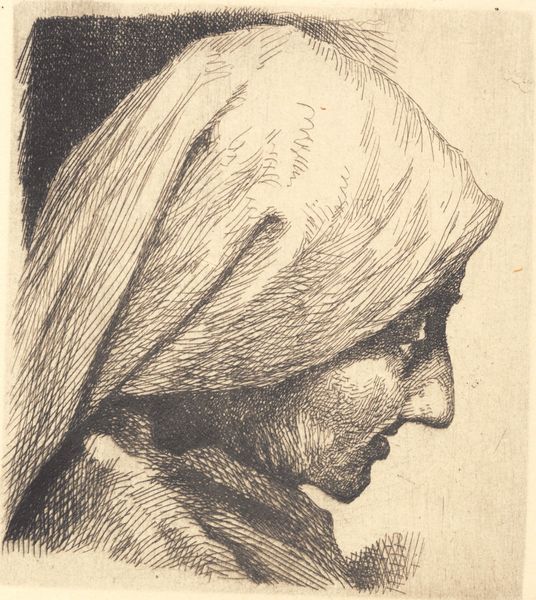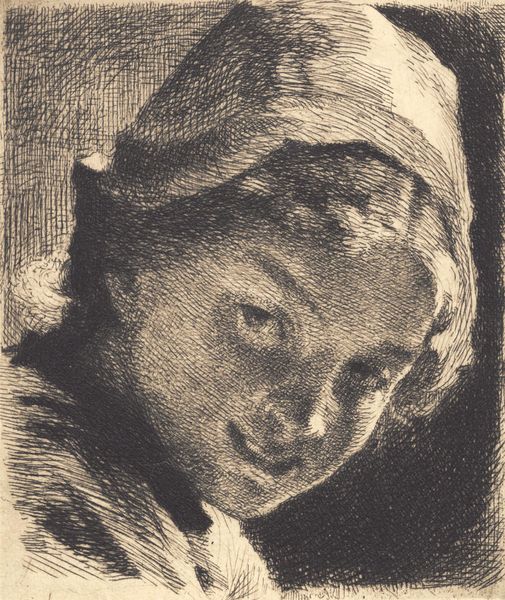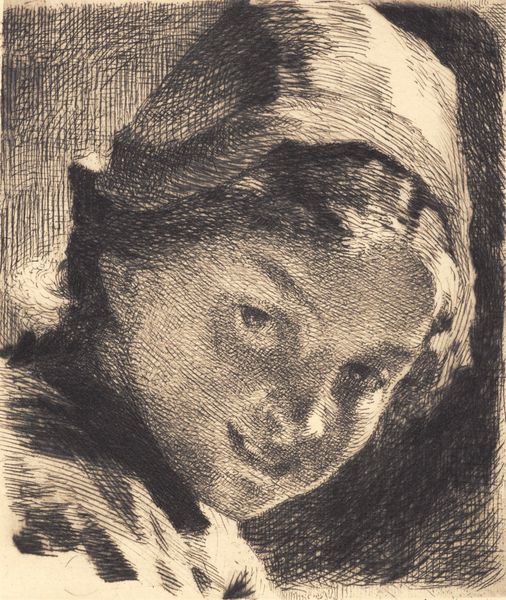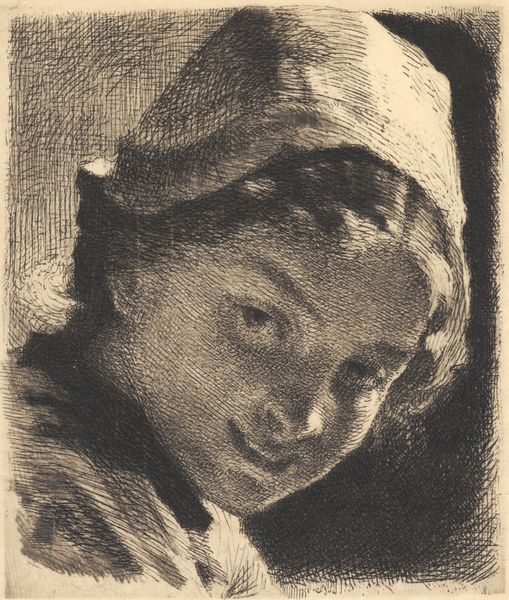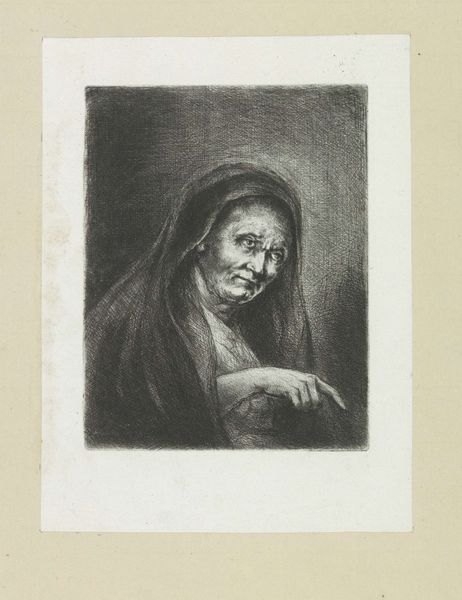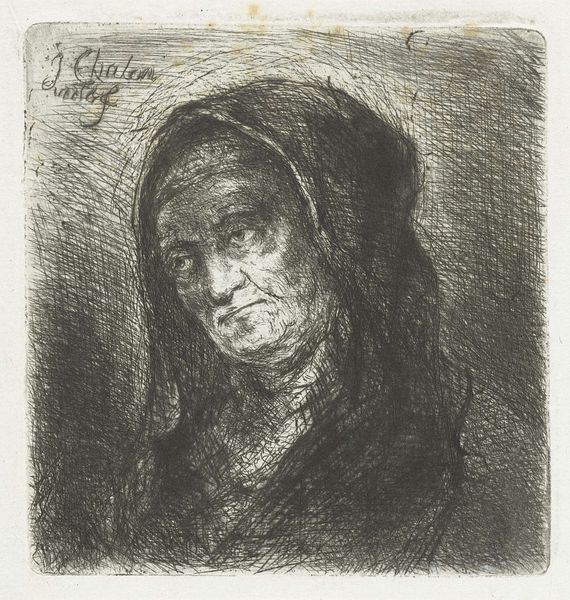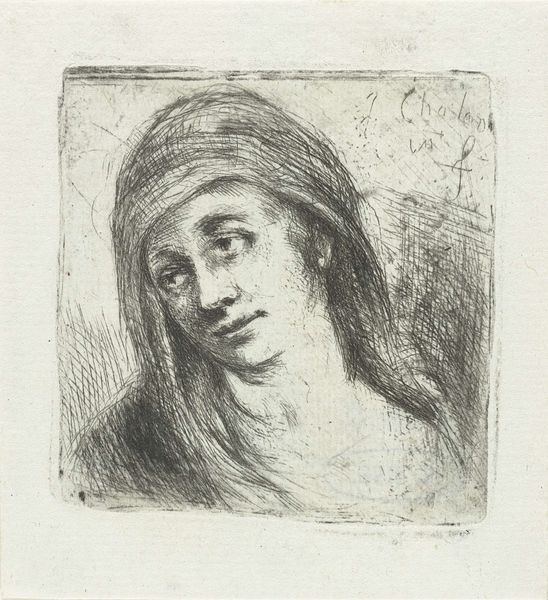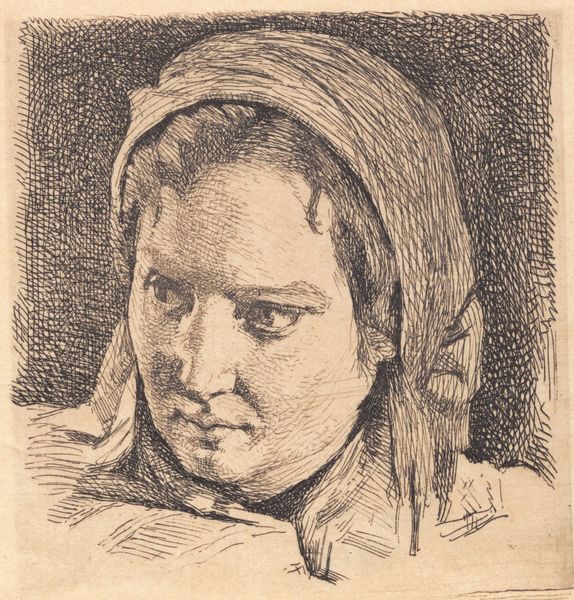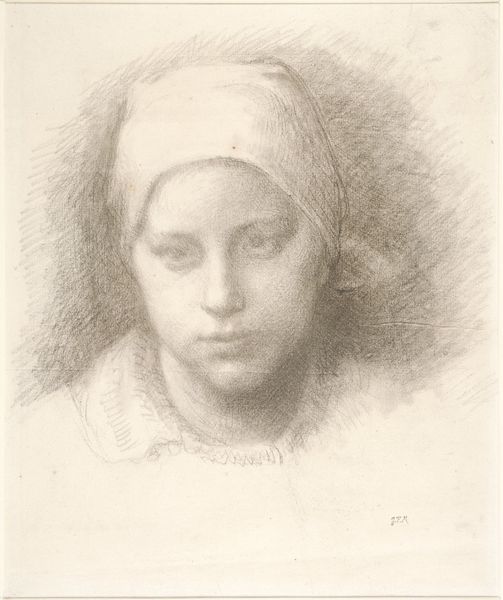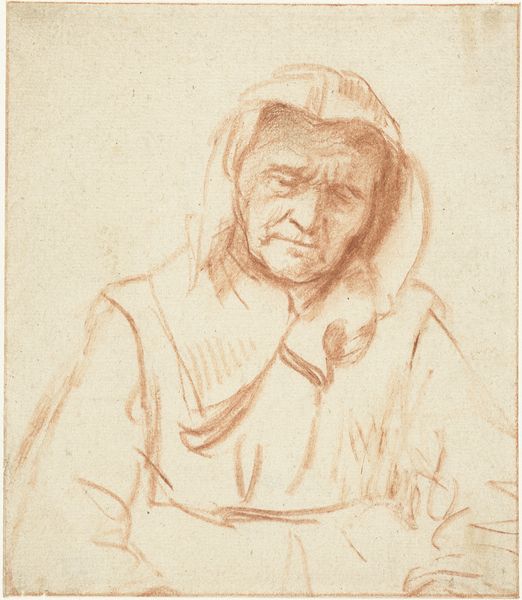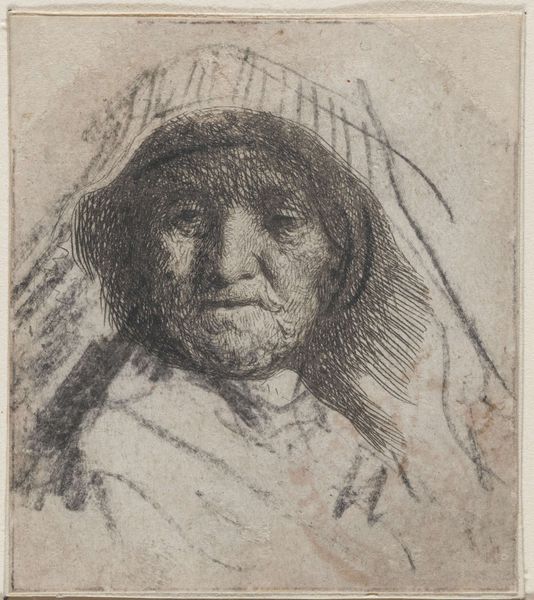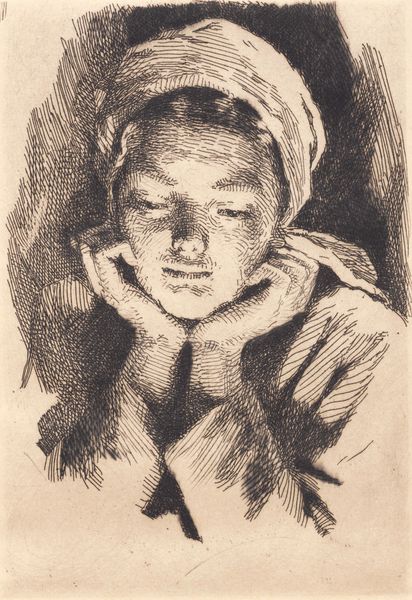
drawing, print, paper, ink, pencil, engraving
#
portrait
#
pencil drawn
#
drawing
# print
#
pencil sketch
#
charcoal drawing
#
paper
#
portrait reference
#
ink
#
pencil drawing
#
pencil
#
portrait drawing
#
engraving
#
realism
Dimensions: 121 mm (height) x 92 mm (width) (plademaal)
Curator: This is a print by Frans Schwartz from 1895, titled "Old Woman with a Hood." It's currently held here at the SMK, Statens Museum for Kunst. Editor: My first impression is a quiet sadness, almost a resignation in her lowered gaze. The subtle variations in the gray lines evoke the vulnerability of old age, or a working life coming to its natural close. Curator: Absolutely, the hood she wears cloaks her in anonymity, yet there’s also something deeply intimate in the way Schwartz captures her. The hood itself is such a rich symbol—protection, piety, even concealment. What kind of production is necessary to show this intimate portrait in a large edition? Editor: Good point! This type of etching process could efficiently create multiples. A plate usually meant a master print and therefore reproducibility, so the intent wasn't for singular consumption. I imagine this was part of a portfolio of sketches about laborers or daily life. These smaller formats had to be affordable for those subjects of production or fellow citizens to afford a trace or index of labor, right? Curator: Perhaps. Consider how images of older women, especially those in simple garments like this hood, were circulated at the time. It reinforces the social role of elderly women, and often ties into religious narratives, in the iconographic construction of humility. Editor: I agree there is likely religious symbolism implied by the hooded depiction of the subject. And that also reveals the artist's implicit class perspective to idealize this subject. If this was reproduced in larger volumes, imagine it becoming part of moralizing projects, like those about self-reliance and religious beliefs among older working women, as that role model disappeared in newly urban and industrialized life. Curator: That makes a great deal of sense. The artist has employed very fine strokes to make her likeness and this woman appears pensive but her face isn't grotesque or miserable either, which suggests more respectful purposes for a change. Editor: Exactly. It strikes me that the very *making* of multiples served some other didactic goal. That shifts our view, away from thinking about art for elites and more to mass image circulation with cultural work at its center. Thanks, I think that detail gives a new, slightly uneasy, perspective on the artwork.
Comments
No comments
Be the first to comment and join the conversation on the ultimate creative platform.
